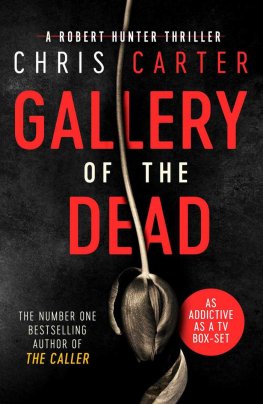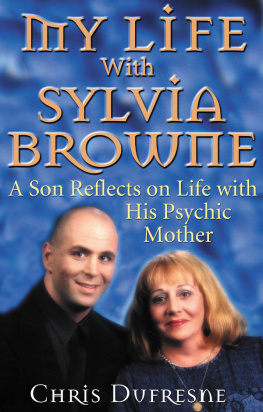About the Author
Peter Robinson grew up in Yorkshire, and now divides his time between Richmond and Canada.
Before the Poison is his third standalone novel. He has also written two collections of short stories, and nineteen books in his bestselling Inspector Banks series. The critically acclaimed crime novels have won numerous awards in Britain, the United States, Canada and Europe, and are published in translation all over the world.
Visit Peter Robinsons website at www.inspectorbanks.com.
ACKNOWLEDGEMENTS
Of the numerous books I read while researching the background for this novel, I would first like to single out Nicola Tyrers invaluable Sisters in Arms: British Army Nurses Tell Their Story. This was my starting point, and it set me on my course to Brenda McBrydes Quiet Heroines and A Nurses War, Angela Boltons The Maturing Sun: An Army Nurse in India 1942-45, and to Grey and Scarlet: Letters from the War Areas by Army Sisters on Active Service, edited by Ada Harrison. From these books I gained whatever insight I have into the lives of the Queen Alexandras nurses during the Second World War, and I have incorporated the details of many of their experiences into Graces journal. I am also grateful to White Coolies, by Betty Jeffrey, and All this Hell: U.S. Nurses Imprisoned by the Japanese, by Evelyn M. Monahan and Rosemary Neidel-Greenlee, and to Singapore Burning, by Colin Smith.
As regards local history, I owe thanks to The History of Richmond, in the County of York; Including a Description of Other Remains of Antiquity in the Neighbourhood by Christopher Clarkson, A New and Complete History of the County of York by Thomas Allen, Robinsons Guide to Richmond by W.R. Robinson, Richmond at the Start of the 21st Century: An Architectural History, by Mark Whyman, Richmond North Yorkshire From Low Up in the Air, by Audrey Carr, and The History of Richmond, North Yorkshire: From Earliest Times to 2000, by Jane Hatcher.
I would like to thank Sheila Halladay for reading the manuscript in such a short time and coming up with so many useful comments and suggestions. At Hodder & Stoughton, my thanks go to Carolyn Mays, Francesca Best, Kerry Hood, Jaime Frost, Lucy Hale, Auriol Bishop and Jamie Hodder-Williams; at William Morrow, to Carolyn Marino, Wendy Lee, Michael Macmillan and Sharyn Rosenblum; and at McClelland and Stewart, to Dinah Forbes, Doug Pepper, Ellen Seligman and Ashley Dunn. I would also like to thank my agents Dominick Abel and David Grossman for their continued support.
I must also thank Carlton Boyce for arranging for me to talk to the prisoners and for giving me the grand tour of HMP Leeds. And many thanks to Chris Wade for the loan of the cottage in Staithes. These acknowledgements wouldnt be complete without also thanking Anika Ibrahim and Jonathan Ball for their wonderful hospitality in South Africa, Anne Michel and the team from Albin Michel in Paris, and the ladies at Dymocks, in Melbourne, for answering my questions.
Also by Peter Robinson
Caedmons Song
No Cure for Love
INSPECTOR BANKS NOVELS
Gallows View
A Dedicated Man
A Necessary End
The Hanging Valley
Past Reason Hated
Wednesdays Child
Dry Bones that Dream
Innocent Graves
Dead Right
In a Dry Season
Cold is the Grave
Aftermath
The Summer that Never Was
Playing With Fire
Strange Affair
Piece of My Heart
Friend of the Devil
All the Colours of Darkness
Bad Boy
SHORT STORIES
Not Safe After Dark
The Price of Love
Famous Trials: Grace Elizabeth Fox, April 1953, by Sir Charles Hamilton Morley
Grace Elizabeth Fox rose from her bed and dressed with the aid of her young Attending Officer Mary Swann at 6.30 AM on the morning of 23rd April, 1953. She ate a light breakfast of toast, marmalade and tea, then she busied herself writing letters to her family and friends. After a small brandy to steady her nerves shortly before 8.00 AM , she spent the following hour alone with the Chaplain.
At thirty seconds before 9.00 AM , Mr. Albert Pierrepoint and his assistant entered Graces cell, and with his usual polite deference and dispatch, Mr. Pierrepoint tied her hands behind her back with a soft calfskin strap and escorted her the short distance to the Execution House directly above. It was a grey, rainy morning, and the stone steps were dark and slick with rain. The small party entered the House, where the Governor, the doctor and two witnesses were already waiting, at 9.00 AM precisely. According to later accounts, Grace comported herself with great dignity throughout, and she never faltered in her steps or uttered a sound, except for a brief shudder and audible inhalation of breath when she first saw the rope.
Once at the gallows, she was placed in position over the chalked T on the trapdoor, and the assistant pinioned her ankles with a leather strap. Mr. Pierrepoint took from his pocket a white cotton hood, which he placed over Graces head, then he carefully and gently adjusted the leather-sheathed noose around her neck. When all was to his satisfaction, he stepped back, removed the safety pin and pushed the lever away from him in one sharp, swift motion. The trapdoor opened and Grace fell to her death. The whole business, from the cell to the eternal hereafter, took no longer than fifteen seconds.
After a brief examination by the prison doctor, Graces body was left hanging for the regulation hour, after which time it was removed and washed, then an autopsy was performed. The findings were that she died instantaneously of a fracture-dislocation of the spine at C.2 with a 2 inch gap and transverse separation of the spinal cord at the same level. The pathologist also found fractures of both wings of the hyoid and the right wing of the thyroid cartilage. Graces larynx was also fractured.
The following day, after Graces sister Felicity had formally identified the body, a coroners inquest reported her death: Twenty-third April 1953 at H.M. Prison, Leeds: Grace Elizabeth Fox, Female, 40 years, Housewife of Kilnsgate House, Kilnsgarthdale, in the District of Richmond, Yorkshire (North Riding). Cause of Death: Injuries to the central nervous system consequent upon judicial hanging. The Governor entered in his daily log the simple words, The sentence of death on Grace Elizabeth Fox was carried out by means of execution, and Graces body was buried within the prison grounds.
October 2010
I had promised myself that when I turned sixty I would go home. Laura thought it was a great idea, but when the day finally came, I was standing at her graveside in the New England rain, crying my eyes out. All the more reason to go, I thought.
In two hundred yards, bear right.
I drove straight on.
In four hundred yards, bear right.
I continued driving under the canopy of trees, leaves falling and swirling around me. The screen froze, then flickered and dissolved, reforming into new shapes that didnt in the least resemble the landscape I was driving through.
Please turn around and turn left in three hundred yards.
I didnt think this could be true. I was sure that my turning lay still about half a mile ahead to the left. It was easy to miss, I had been told, especially if you have never made it before. Satnavs obviously behave strangely in Yorkshire. I decided to leave it on and find out what it said next.
I slowed to a crawl, kept my eyes open, and there it was, a gap in the drystone wall on my left, which resembled a neglected farm track more than anything else, though I could see by the tyre marks that someone else had been that way recently. There was no signpost, and an old wooden farm gate hung open at an angle, broken away from the rusty hinge at the top. The opening was just about wide enough for a small delivery van.
Next page
















